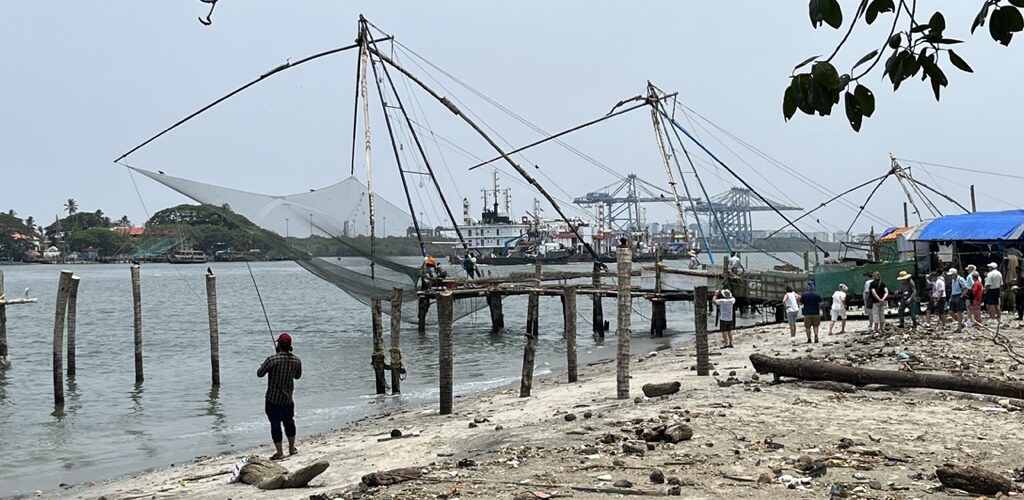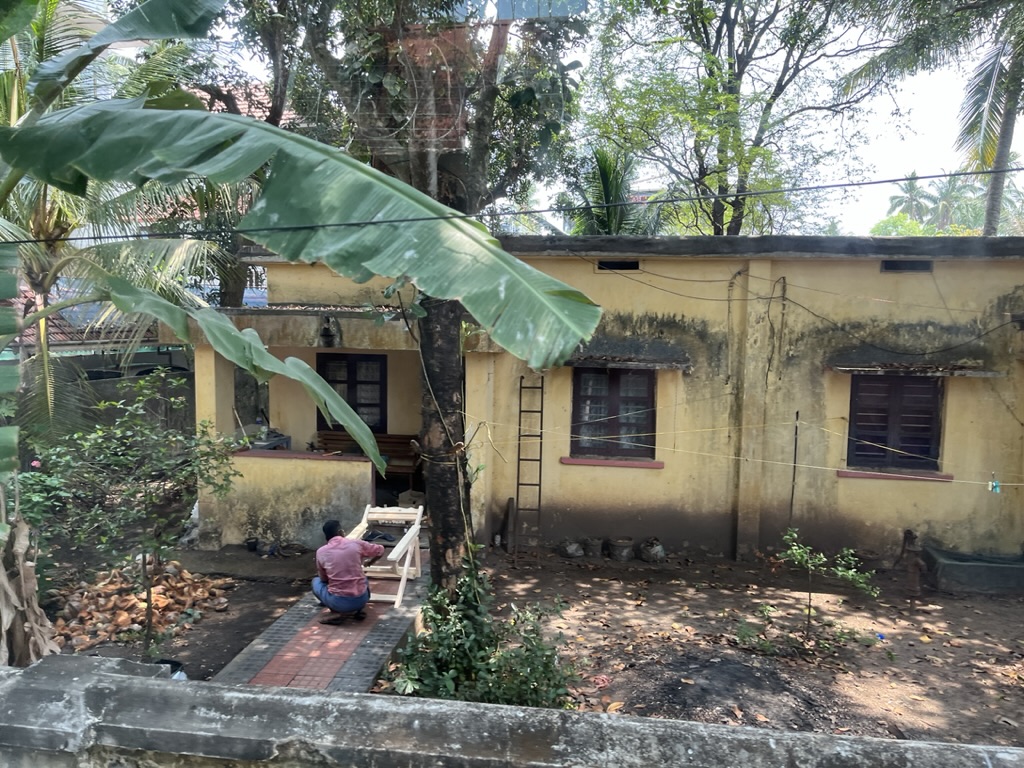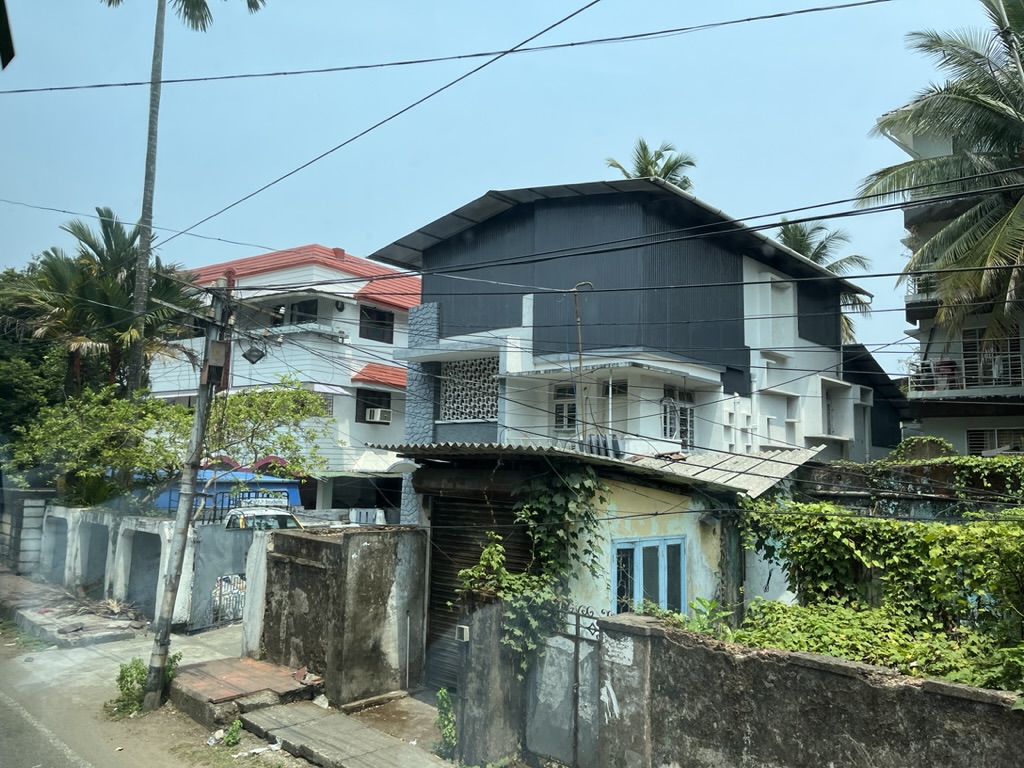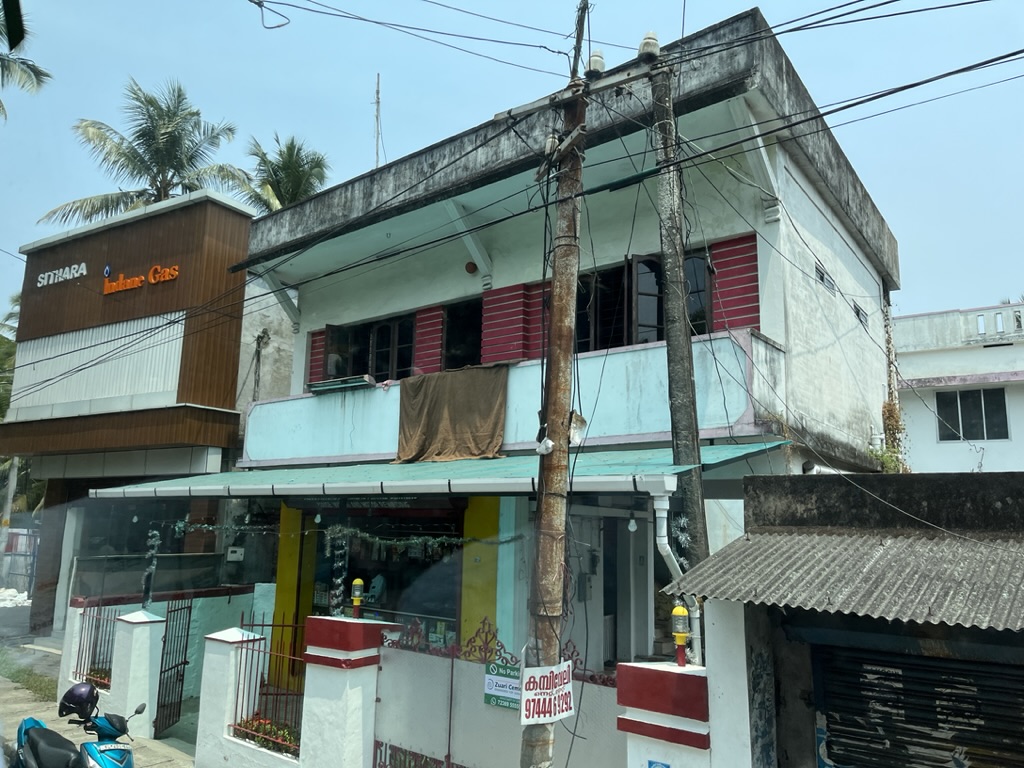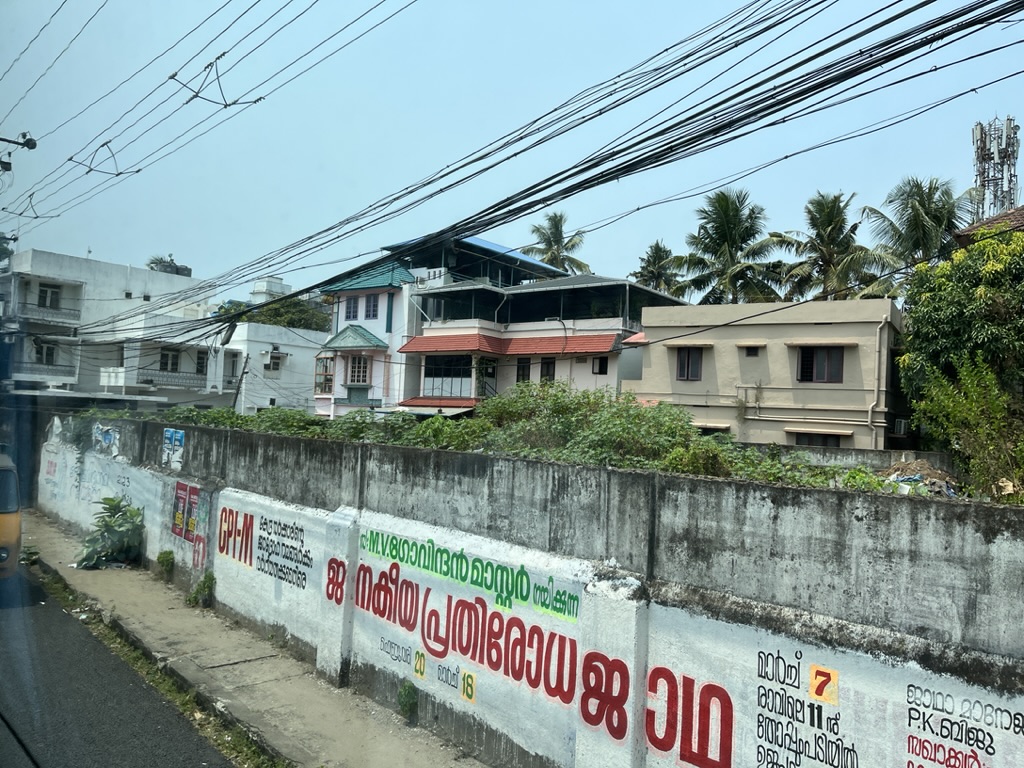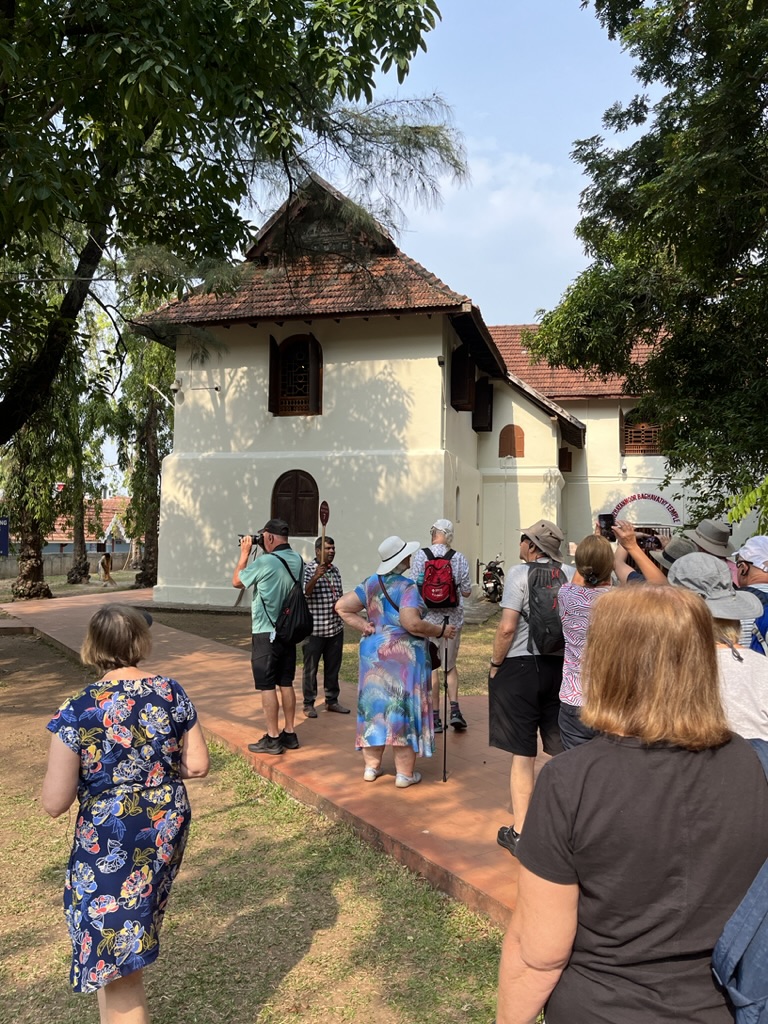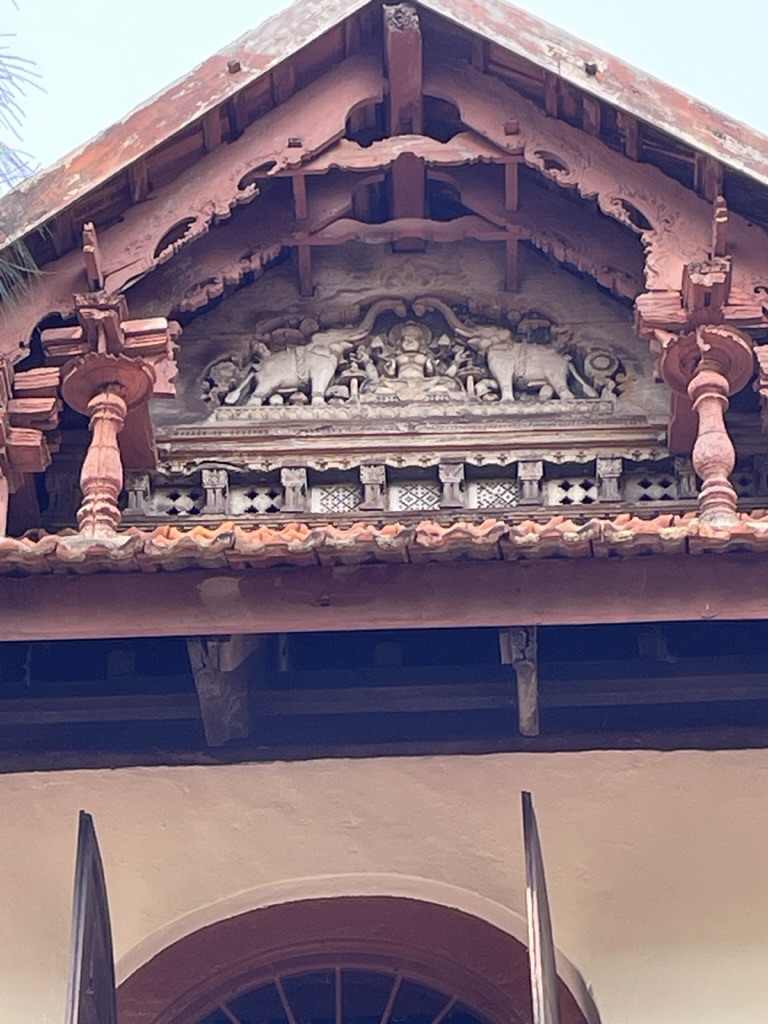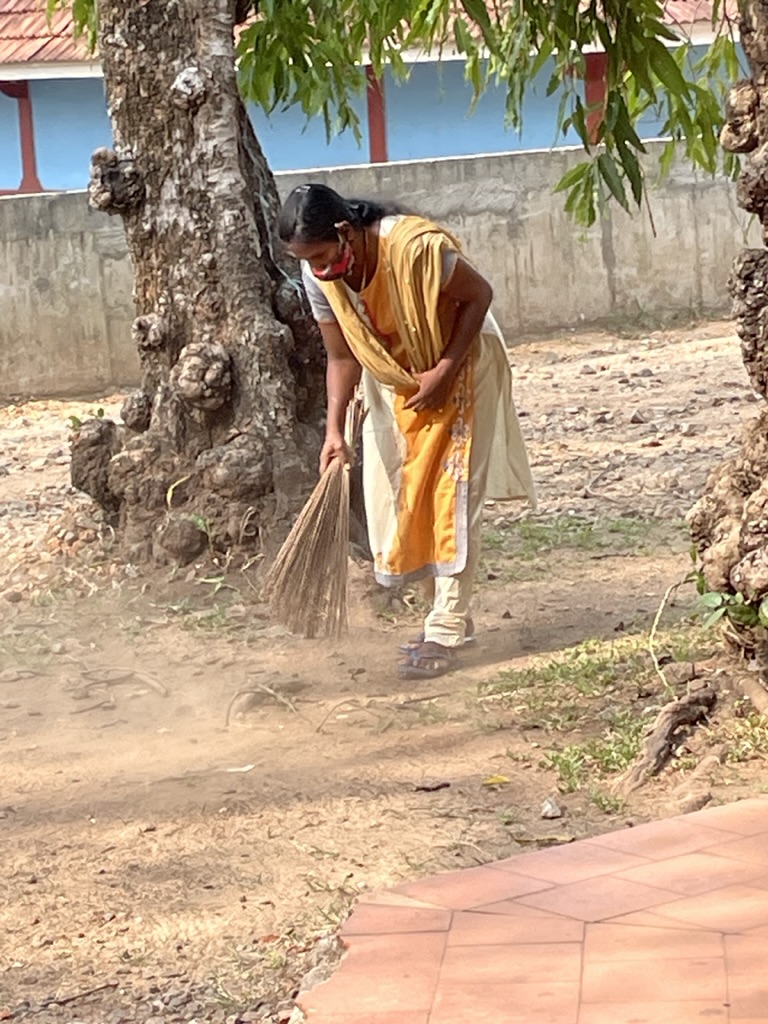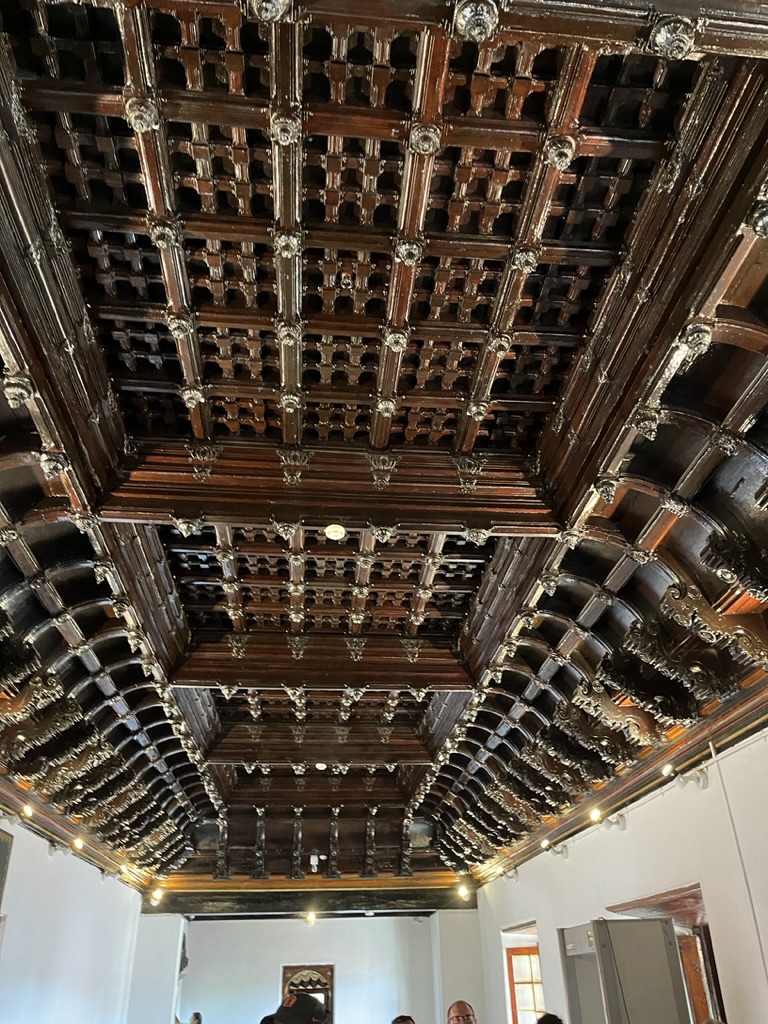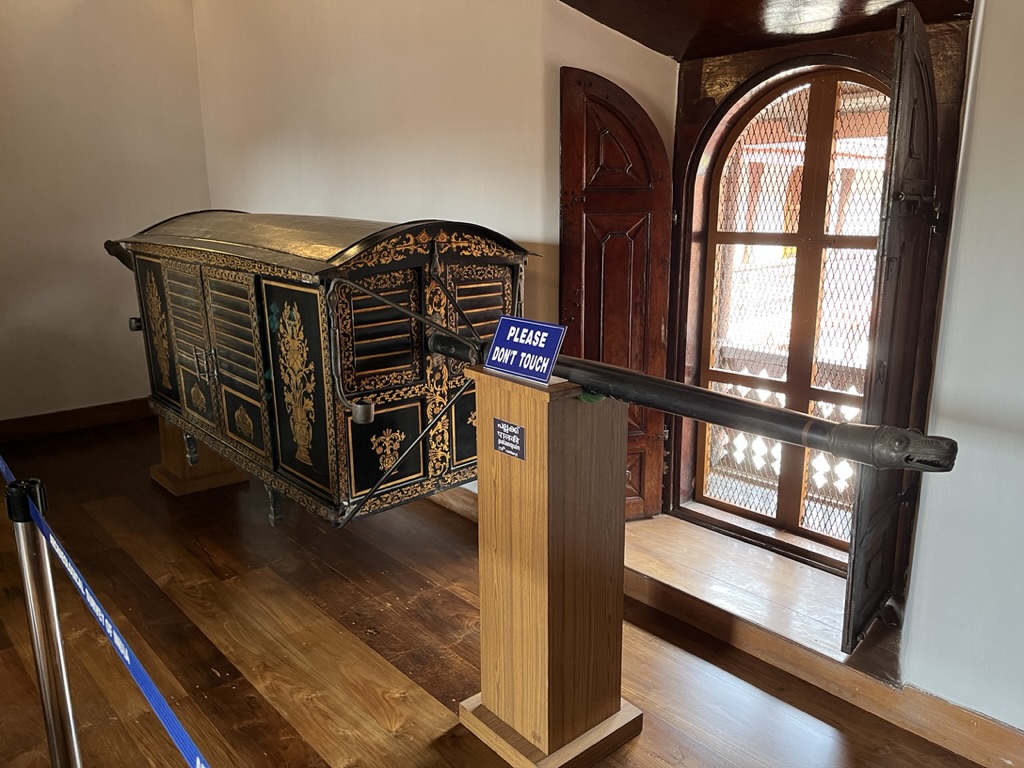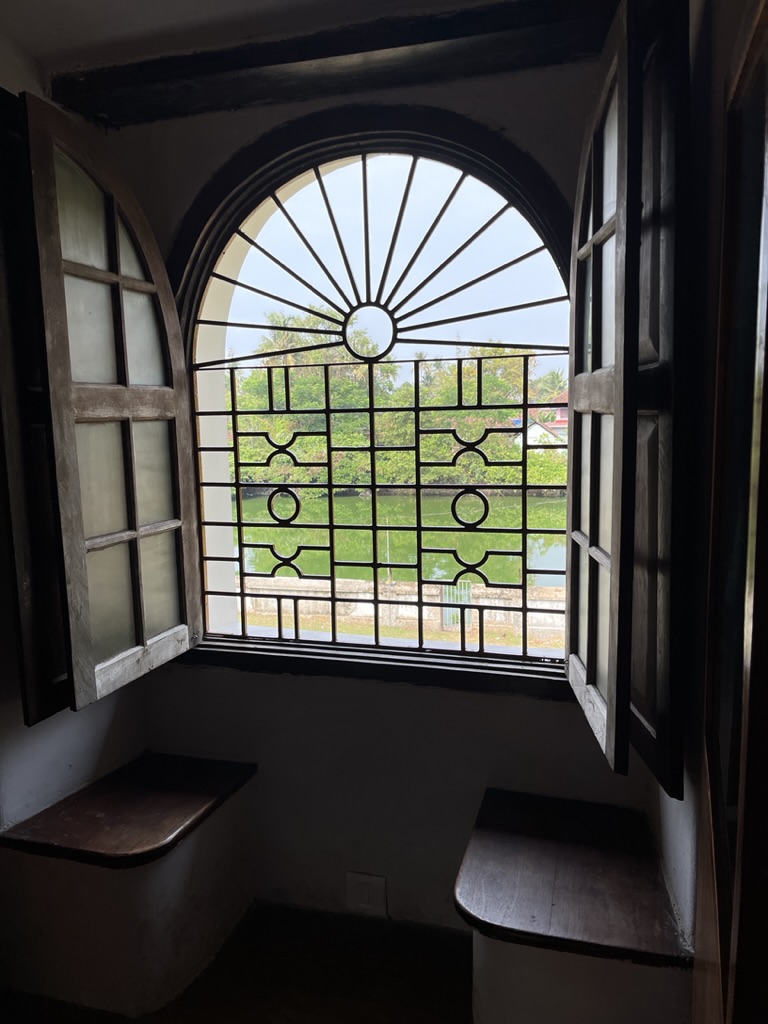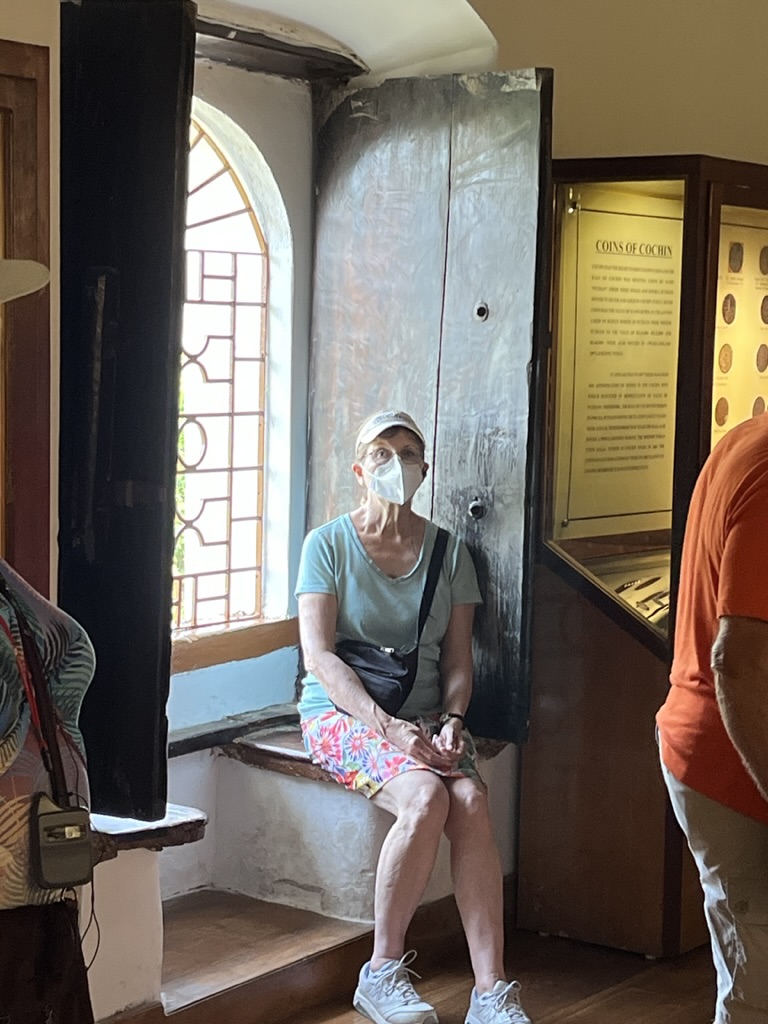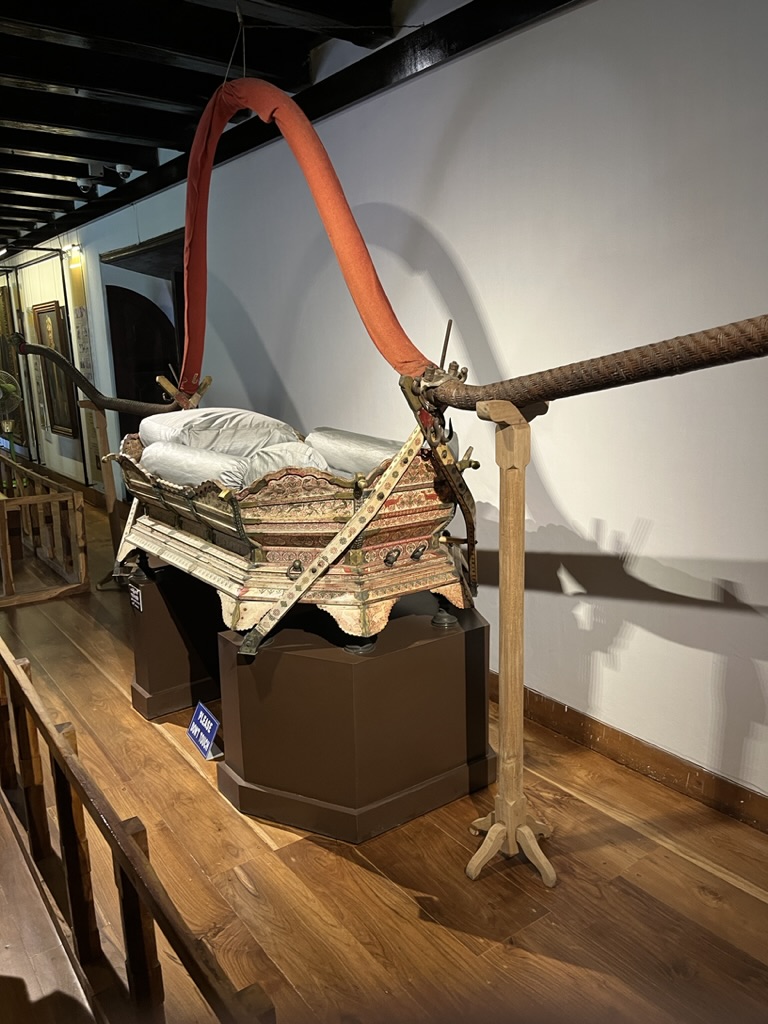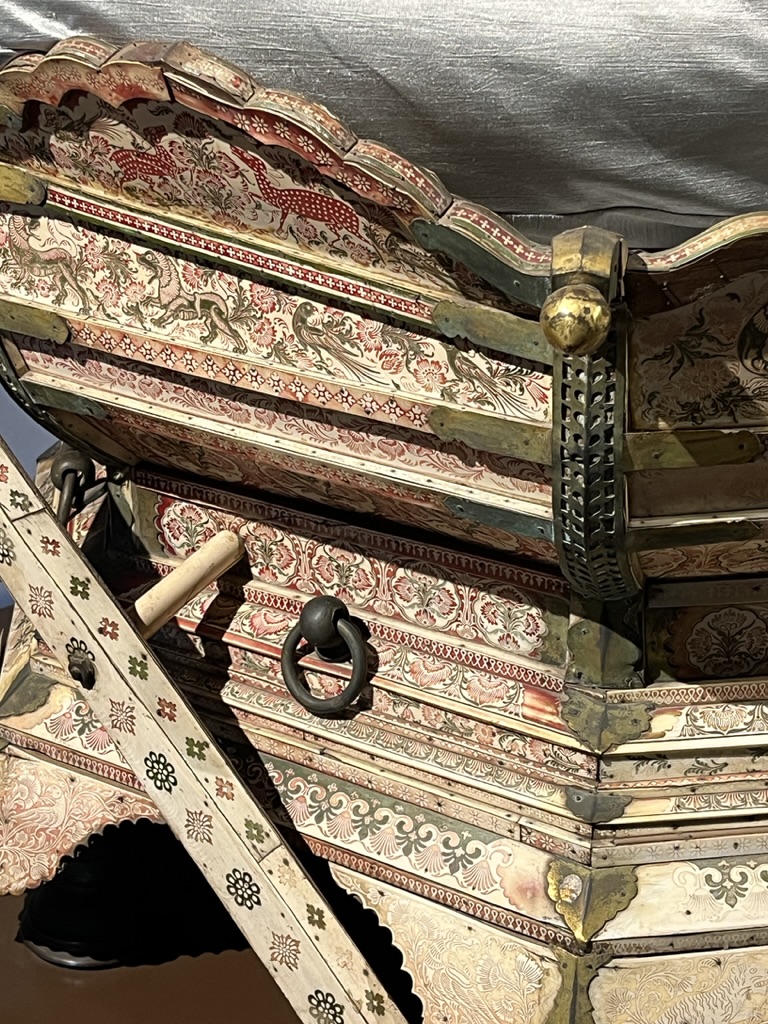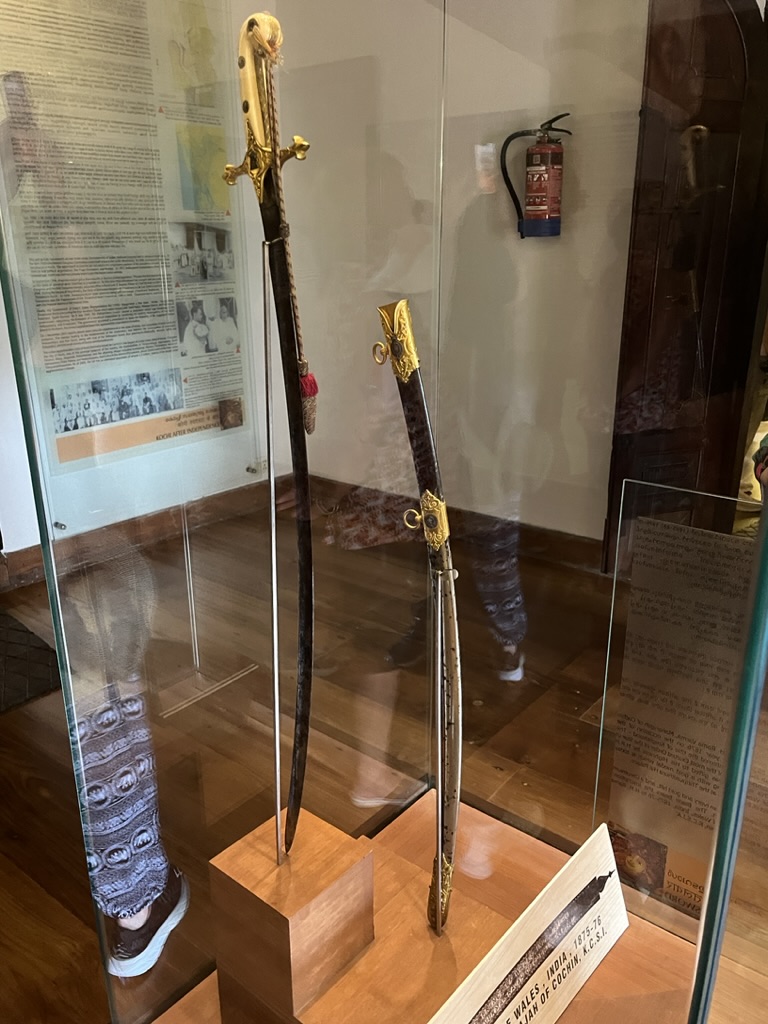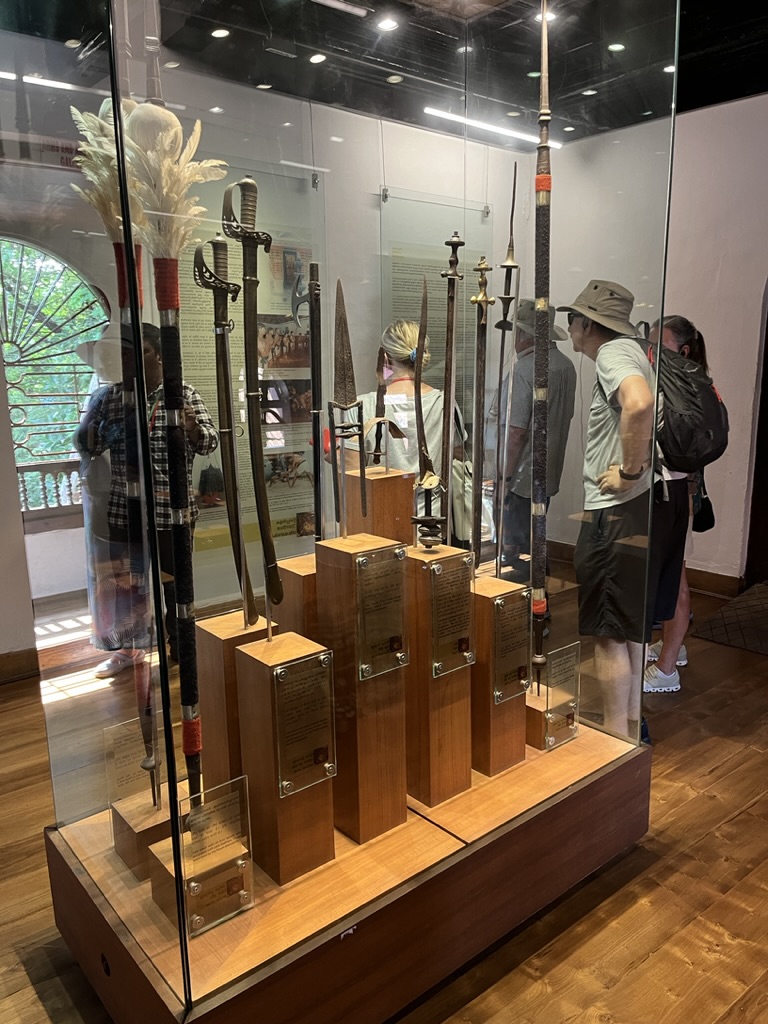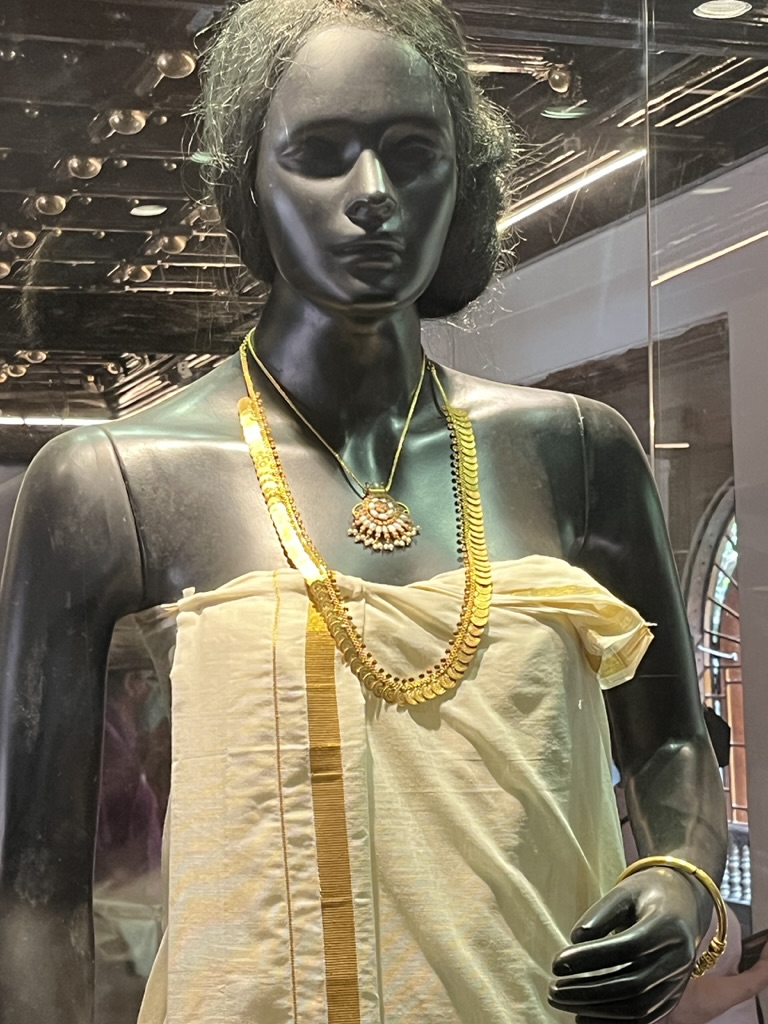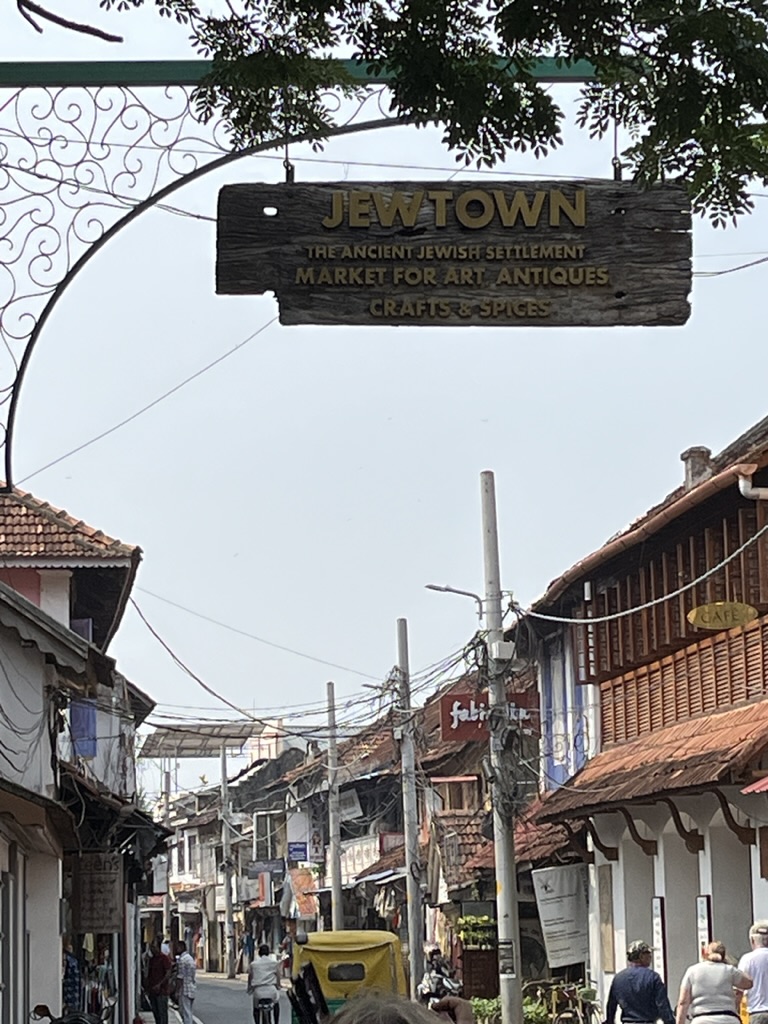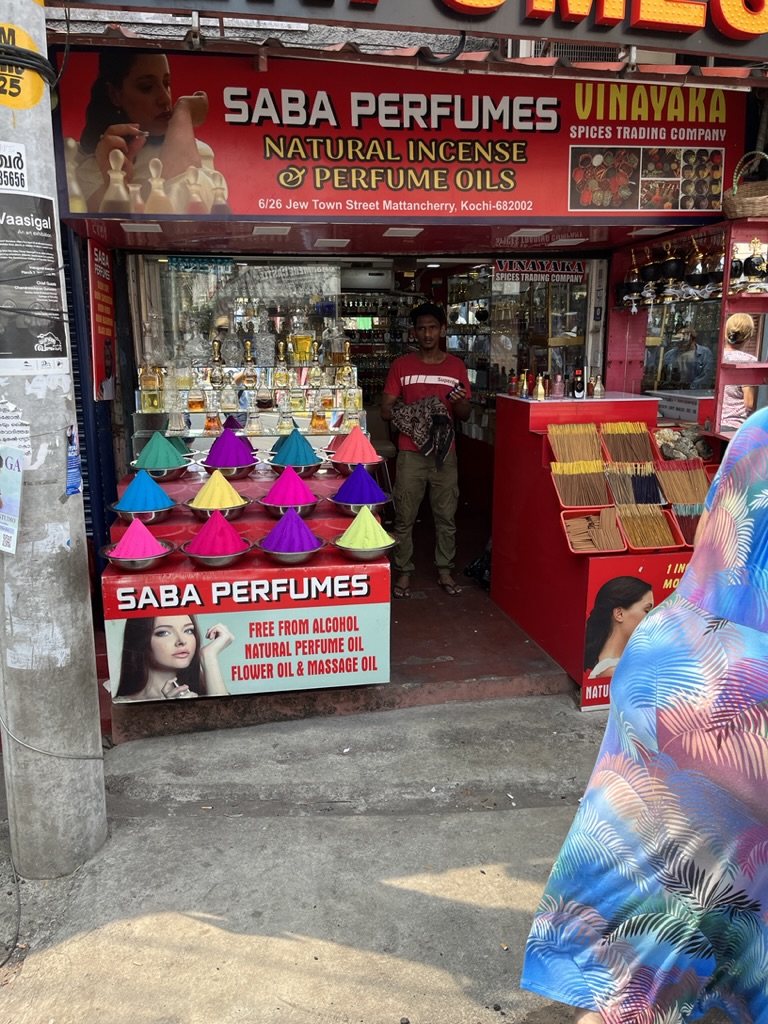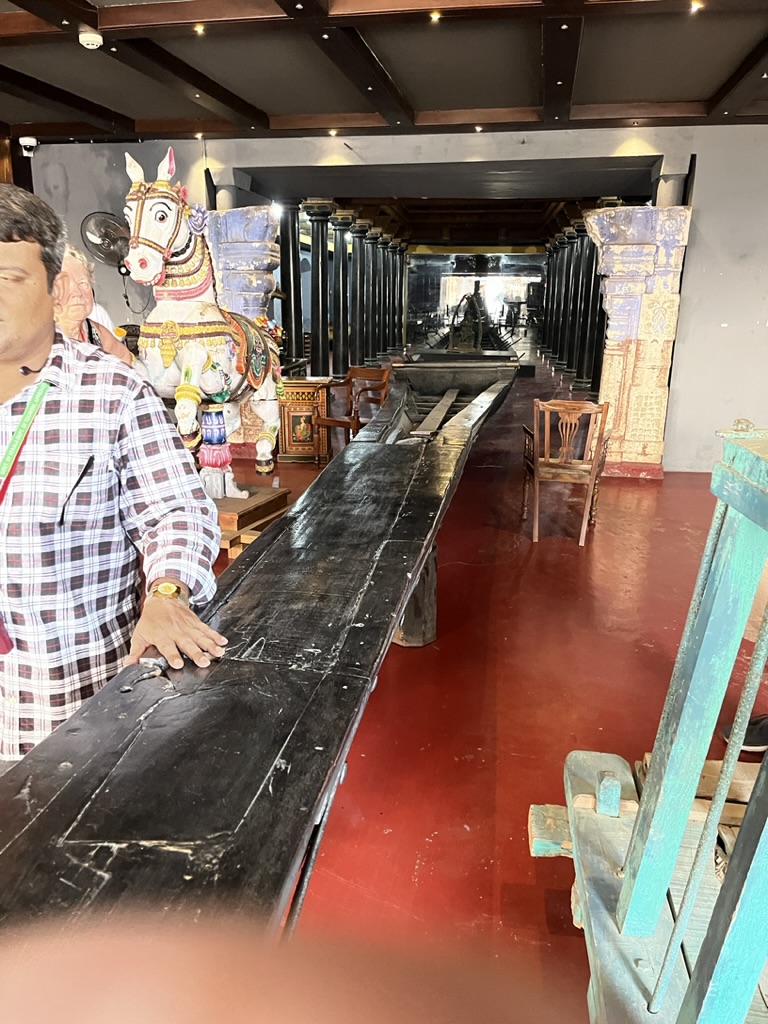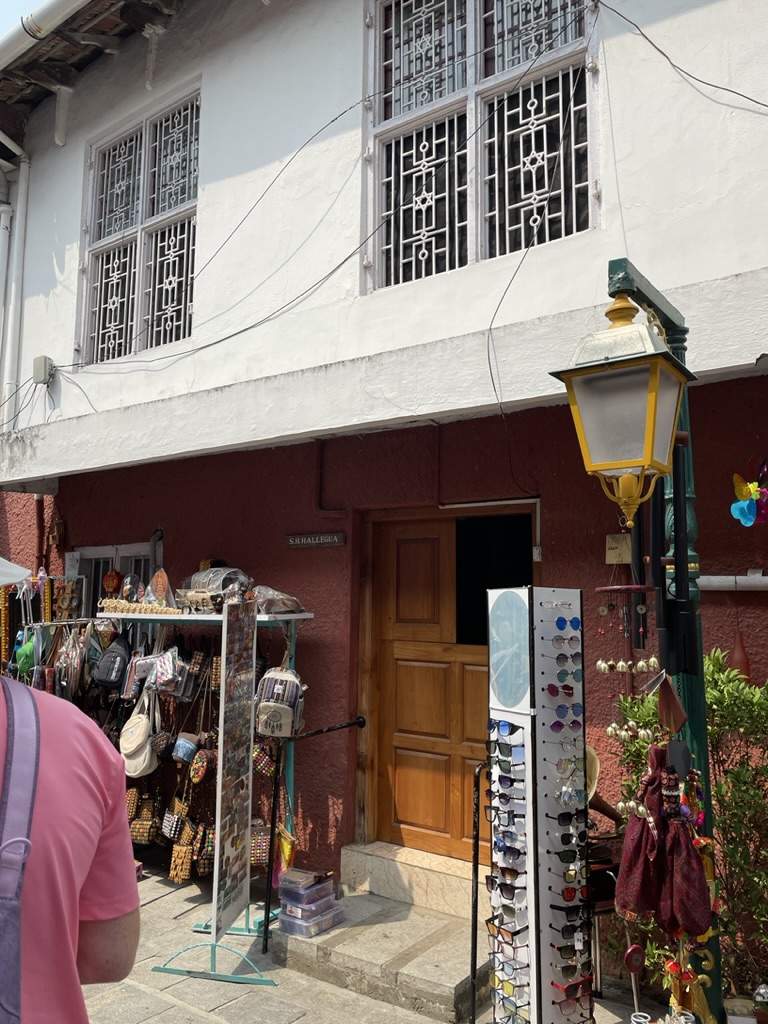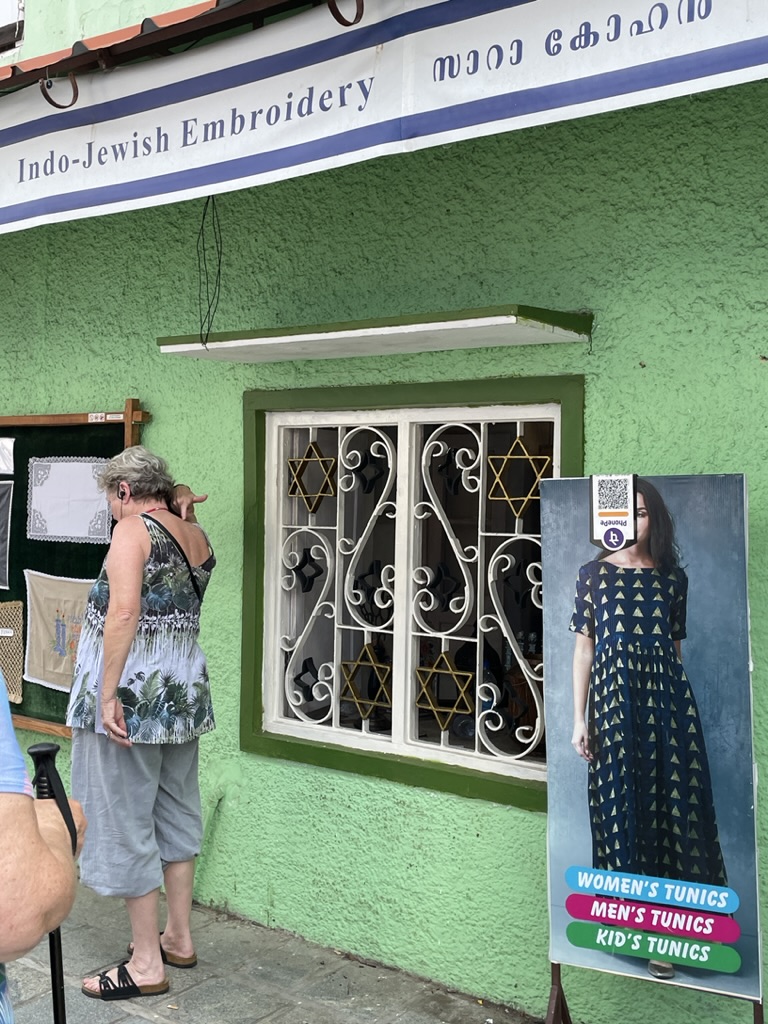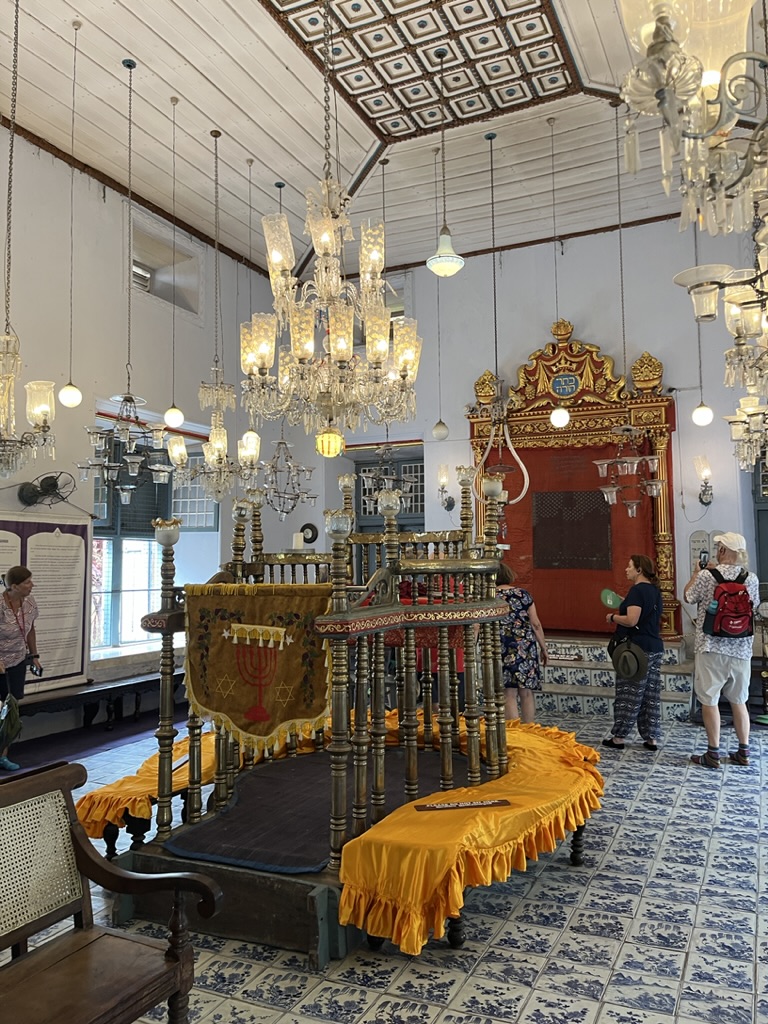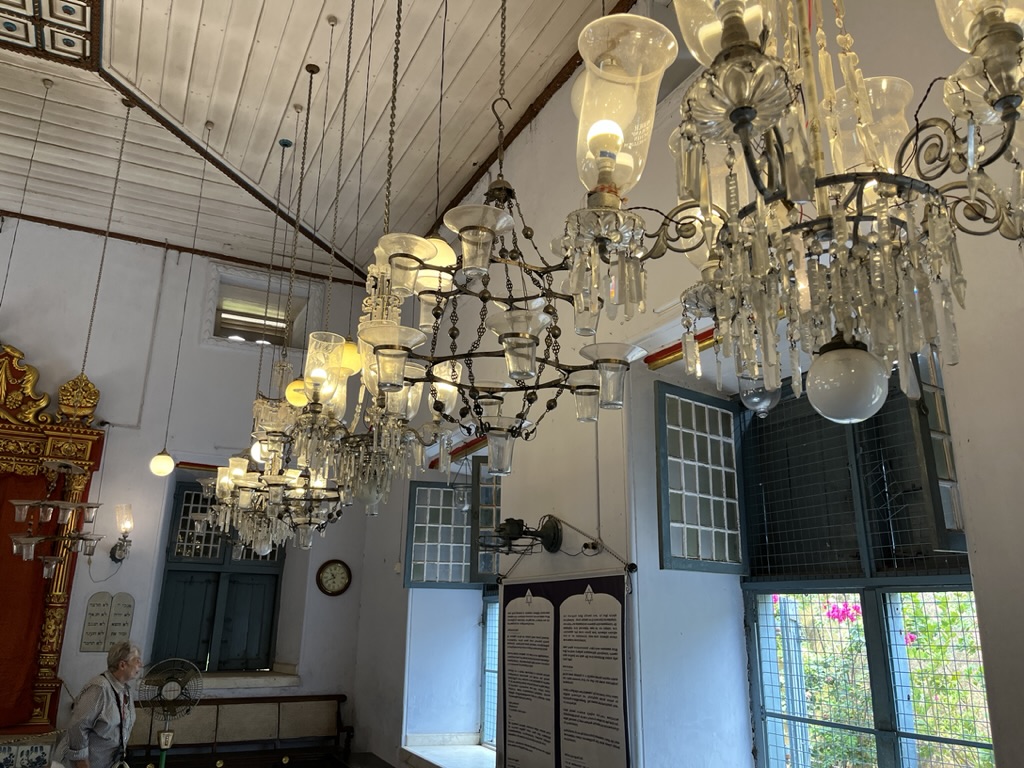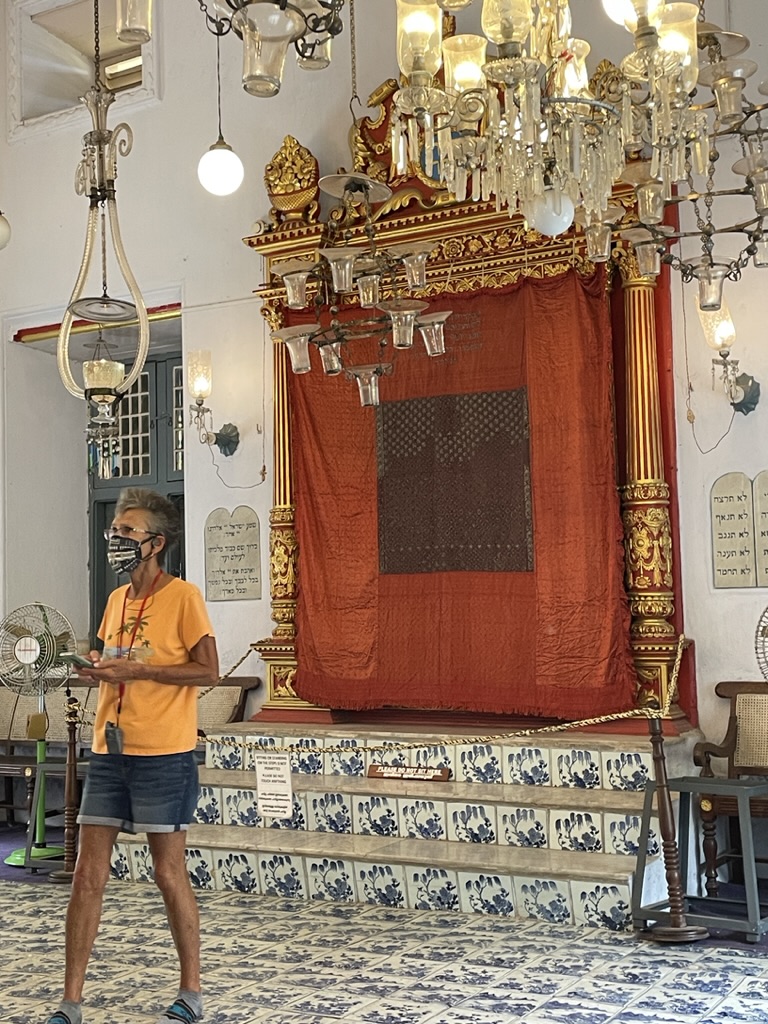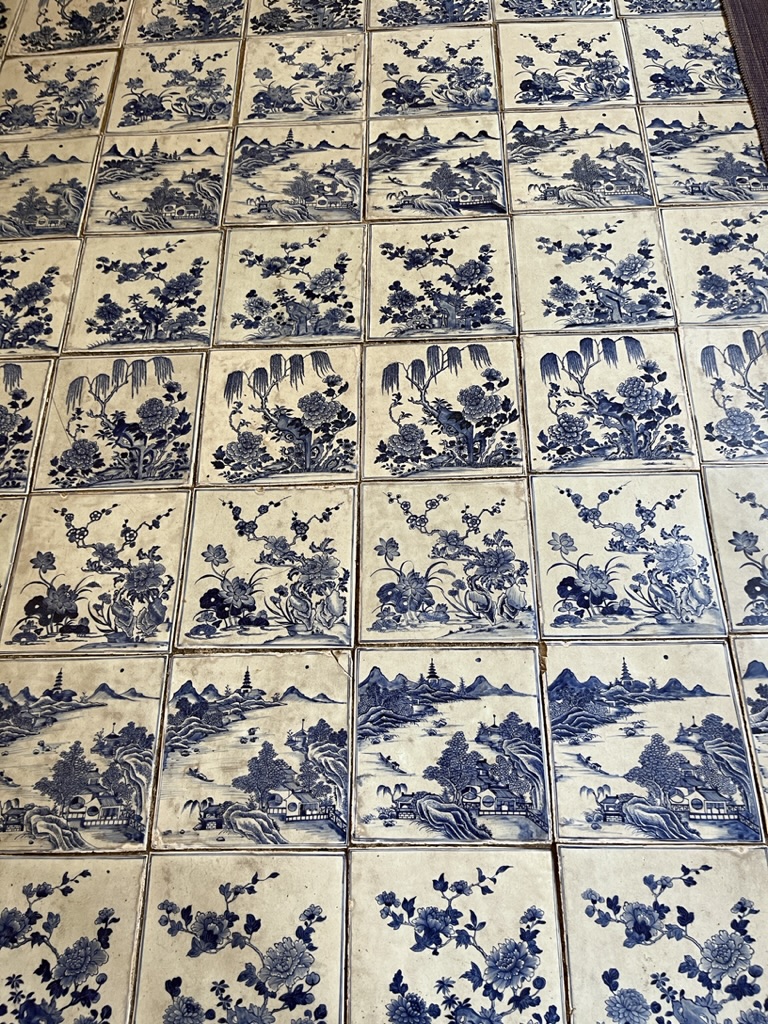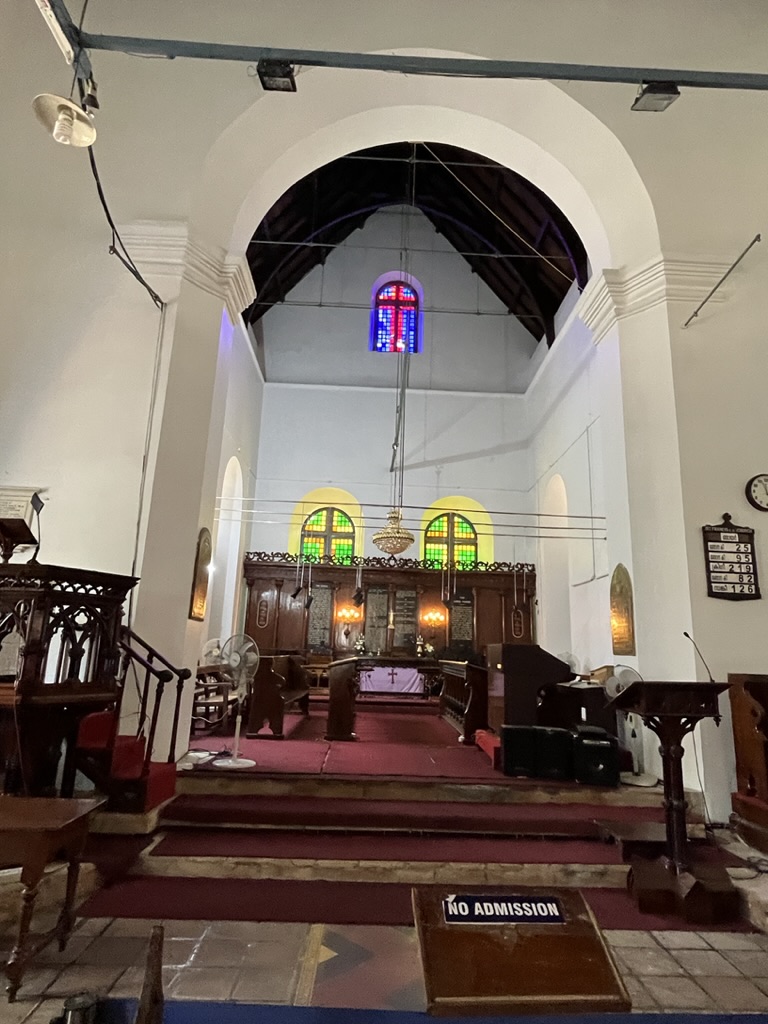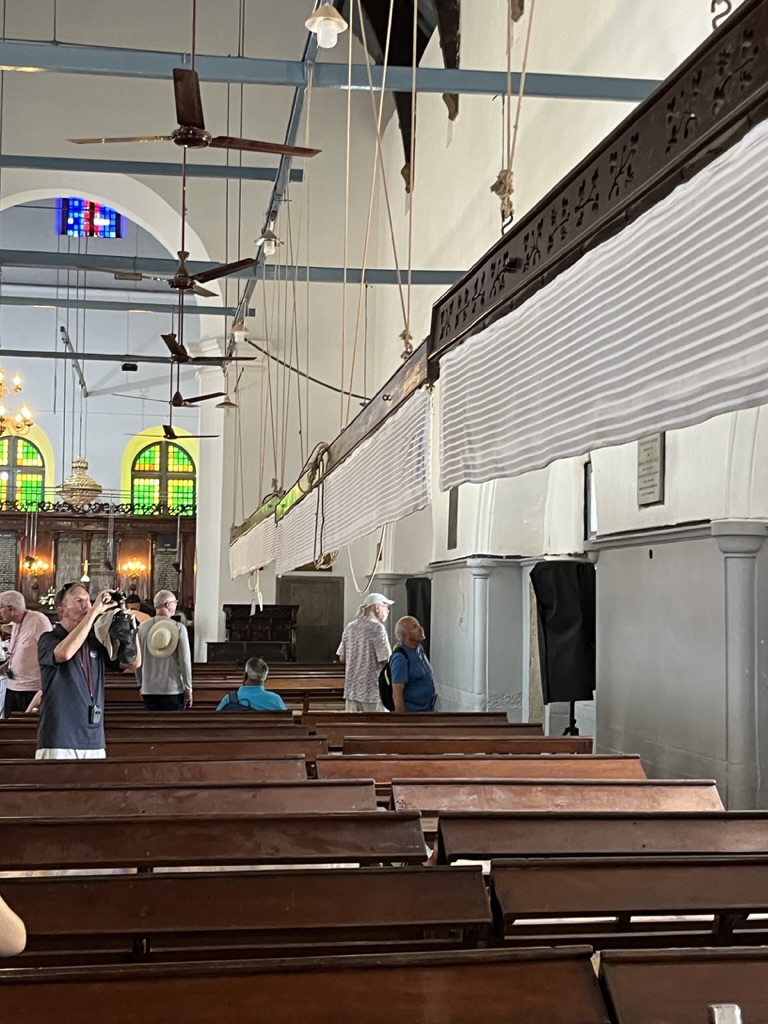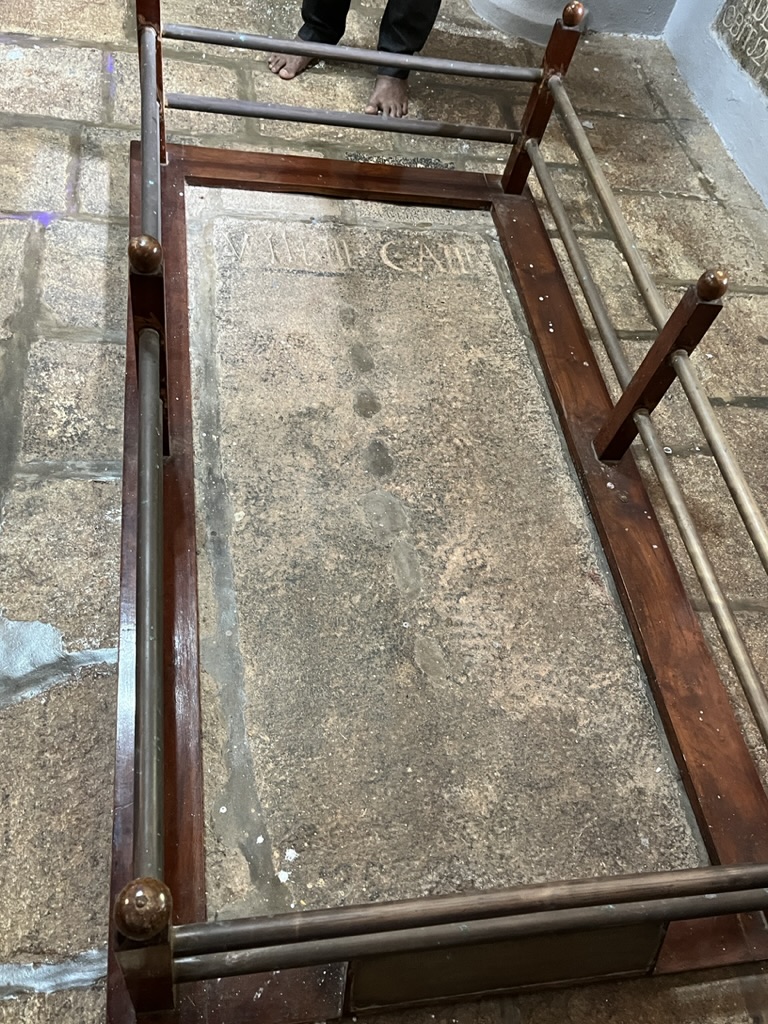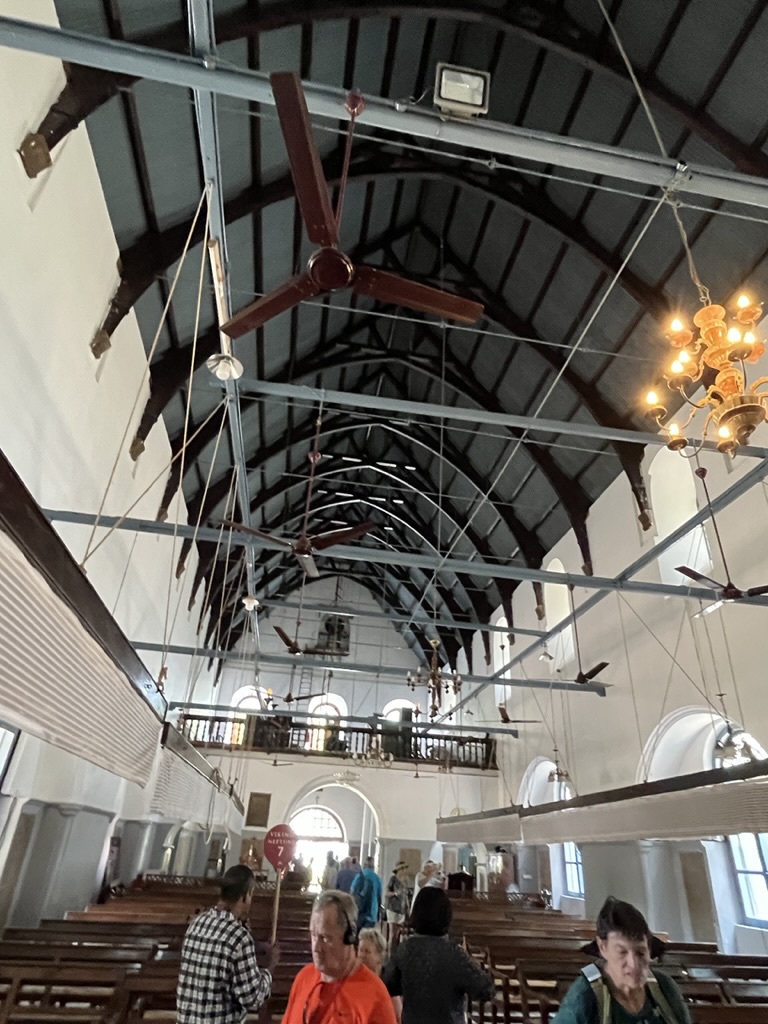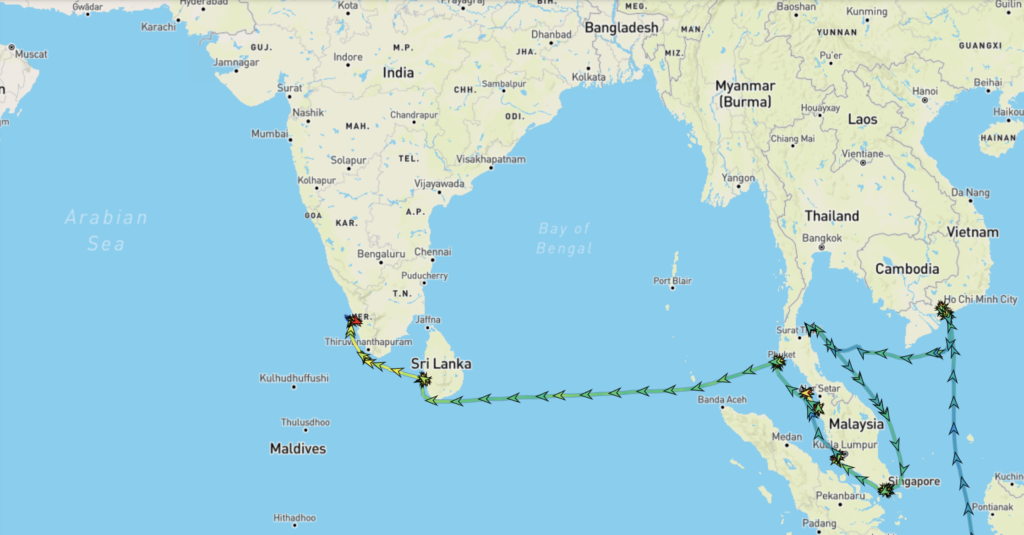
First, the frustration. As far as the interweb is concerned we’re in Hong Kong now. I’m not sure what that means from a technological standpoint, but from an operational perspective it means that I should have paid more attention to advice to buy into a VPN that lets you designate where you are, rather than taking what the network gives you. Bottom line – Youtube doesn’t work. As you’ll see below I’ve been able to upload one (very short) video to the website so you will be able to see that one. The others – both somewhat longer – you’ll have to use your imagination until I can get them uploaded, or until we move to a part of the world where Youtube actually works. So sorry.
Next…
Buckle up Buttercup, We’re in India.
We presented in the Star Theatre nice and early because India requires face-to-face immigration along with multiple forms and pieces of paper. Thankfully they had plenty of Immigration officials so the process wasn’t overly arduous.
On the bus, while we tooled thru the city, our guide talked about the history and culture of the area and we looked out the window – getting a feeling for the culture from ‘street view.’ Unlike Sri Lanka, which was very clean, there is quite a bit of trash on the streets.
Our first stop was the Mattancherry Palace (also known as the Portuguese Palace or the Dutch Palace).
It was constructed by the Portuguese in 1545 and presented as a gift to the King of Cochin.
In 3 of the rooms the walls were covered with tempera paint murals presenting stories from Hindu legends. In the first 2 rooms there were “no photos’ signs. But not in the third room. So I took this photo before I discovered that I was standing behind a uniformed guard who seemed to be watching the group for evidence of illicit photography. So I’m sorry I only got this one shot. But it will give you an idea of the intricacy of design.
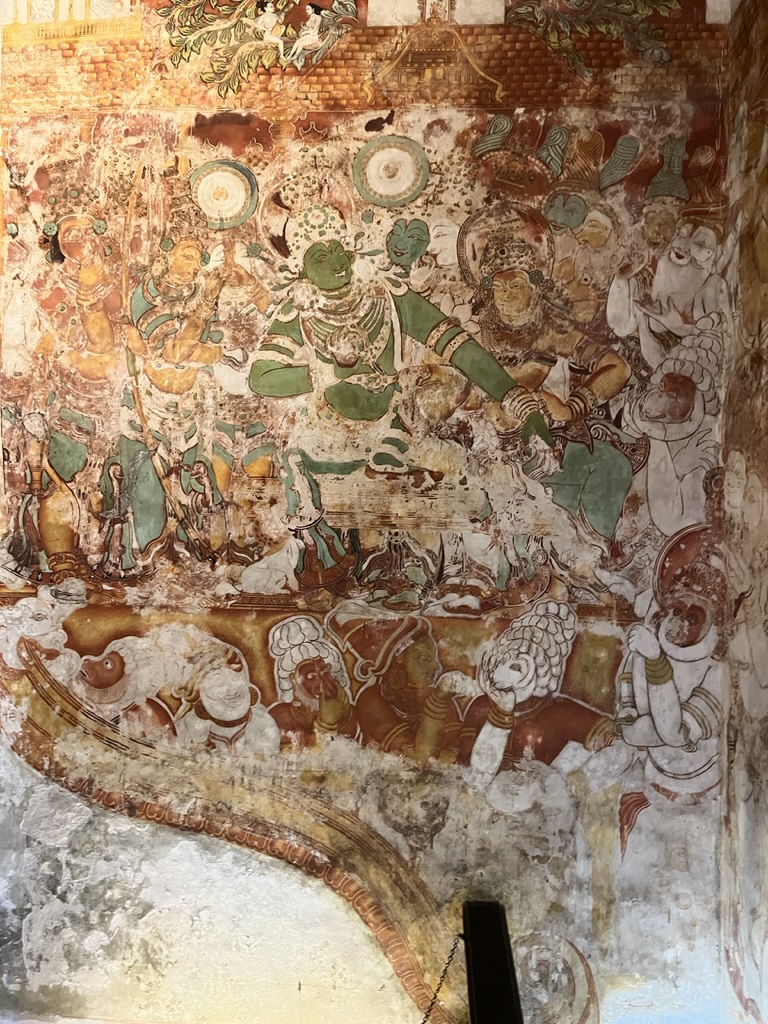
Leaving the palace we walked a short distance thru “Jewtown” to the oldest synagogue in the state of Kerala.
Arriving at the Paradesi Synagogue we removed our shoes and took a break inside while our guide talked about the history of Jewish presence in Kochi. The synagogue dates back to 1568 and its name comes from several Indian languages and translates as “foreigner.” It refers to the origins of the Cochin Jewish community – Sephardic Jews escaping from Portuguese and Spanish persecution.
Our next stop was the Church of St. Francis – the so-called Vasco Da Gama church. The church, built by the Portuguese in 1503 and reconstructed in 1516, is the oldest extant Christian church in India.
When Vasco Da Gama died in Cochin in 1524, he was entombed in the church for 14 years until his son had the body moved back to Lisbon.
Among the unique features of the church are the hand-pulled cloth “fans” hung from the rafters. Ropes attached to the frames extend thru the walls so servants standing outside can pull the cloth “blades” back and forth without disturbing the service. Standard electric fans have been added, but the original fans are still maintained so tourists can take pictures of them.
Leaving the church we walked a short distance to the shoreline to view the famous “cantilever Chinese fishing nets” – the so-called “Iconic image” of Cochin. The large net is spread out between several long poles and a balancing weight of stones is arranged opposite the balance point. When the fishermen decide the net is full enough of fish, they add their weight to the rope of stones to pull the net back up out of the ocean.
[Video of fishing net]
We spent some time wandering thru the fish market.
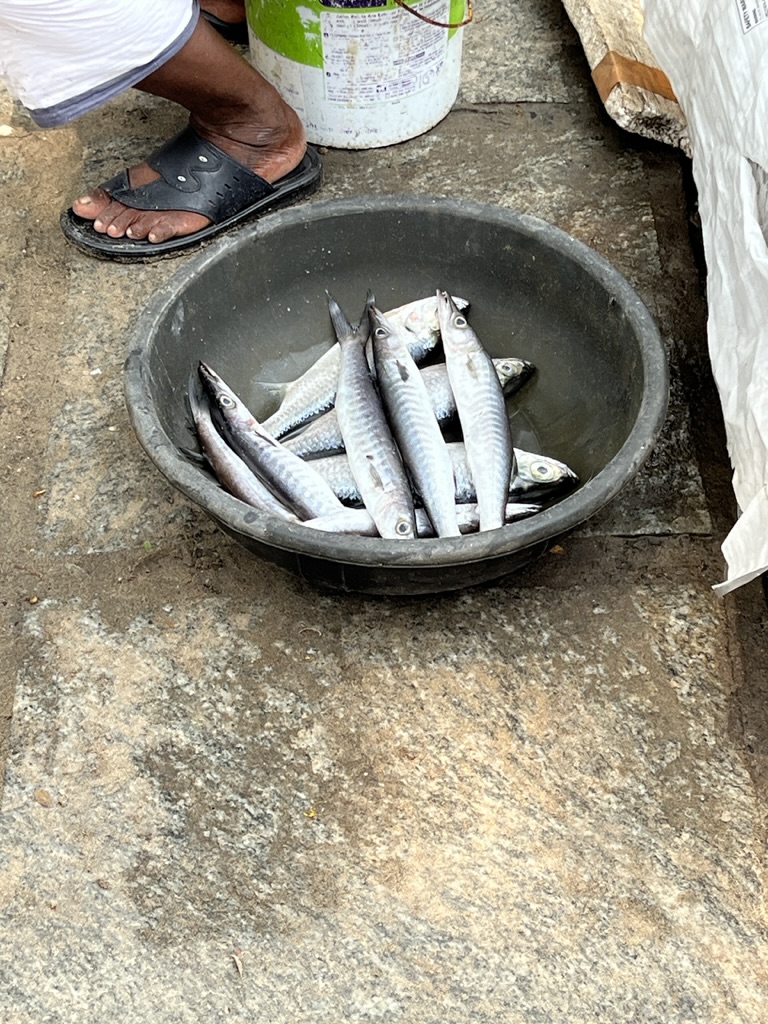
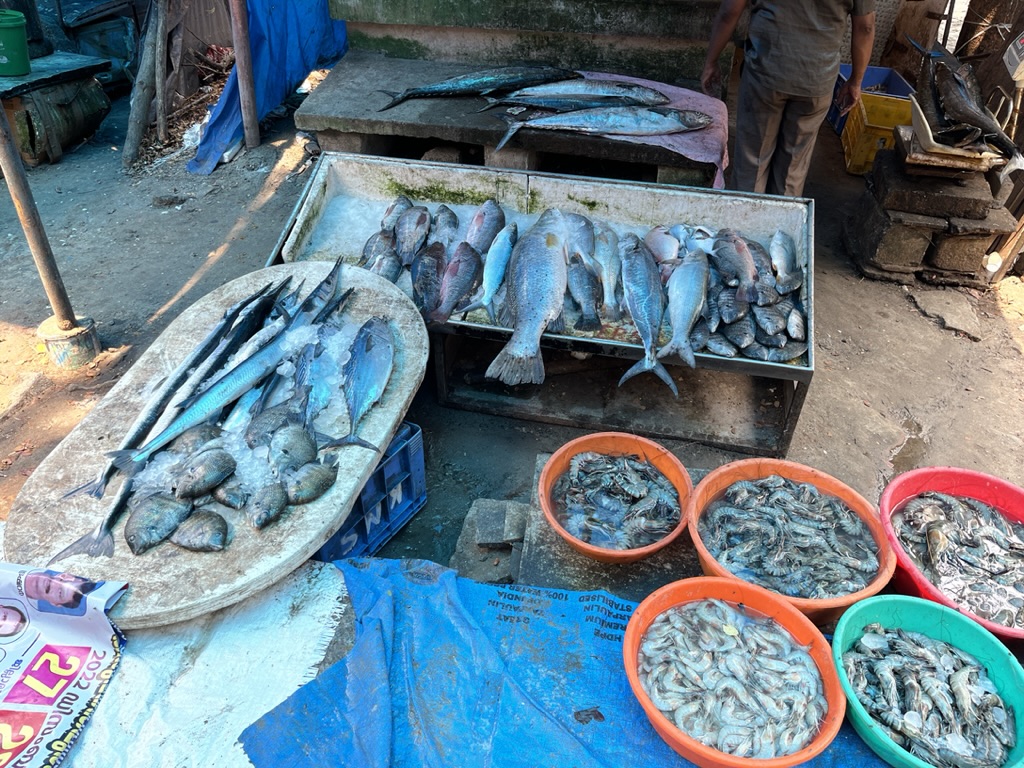
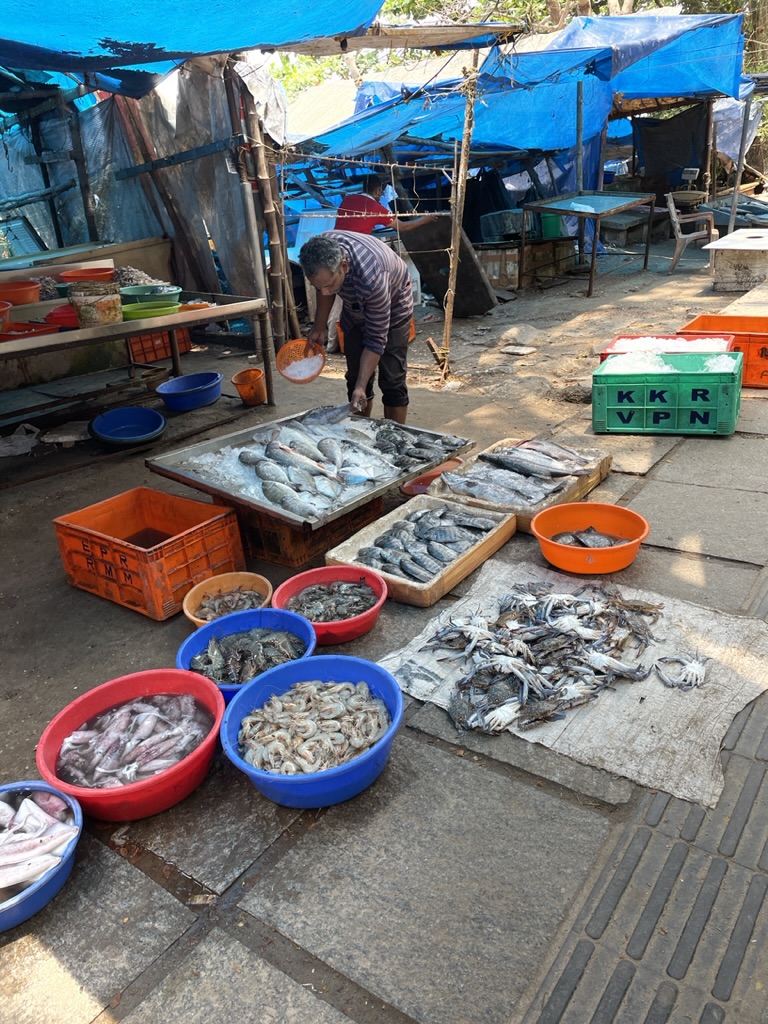
Returning to the ship we were greeted by a red umbrella line complete with traditional local music.
[Video of line]
Passing thru the atrium we were served drinks and a Kathakali Dance performance.
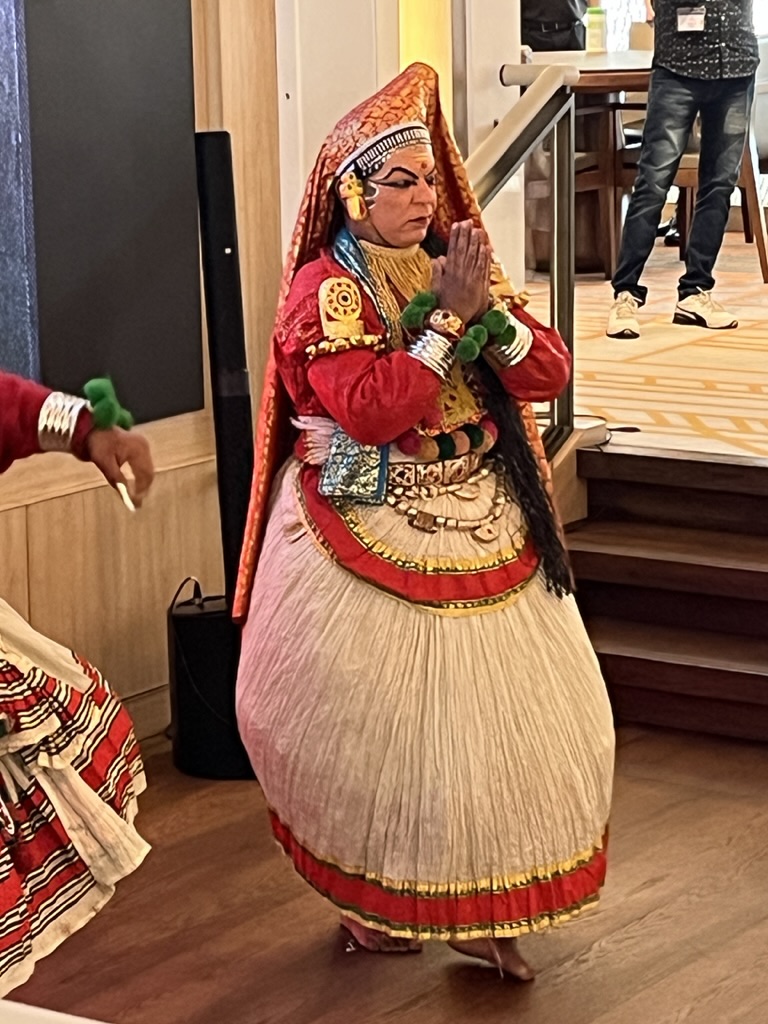
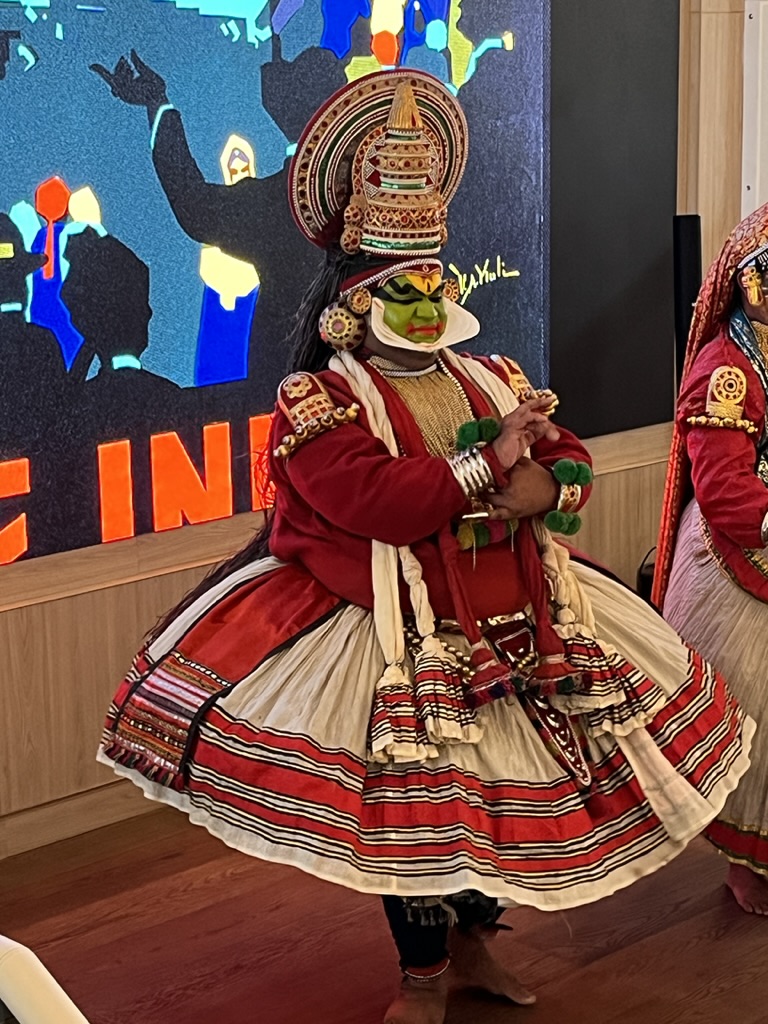
This dance form, originated in the state of Kerala, includes performances that will typically last all night – presenting subject matter from the Ramayana, the Mahabharata, and stories from the Vedic literature chanted and interpreted by the dancers (the production for our group was MUCH shorter). We had no idea what the chanter was saying but it was interesting to watch.
Then it was lunch, a Port Talk about our next stop up the west coast of India (Goa), and an evening musical performance by the Neptune Singers.
Brain Busters was a disaster so we’re going to bed!
Cheryl’s Factoids:
- The Cochin region was very involved international trade from ancient times – especially in trading pepper with Rome and China. (“Trade Winds” got their name from the winds that blew one way to the spice islands for half the year, then – due to season of the monsoons – switched direction so you could sail back home. Meanwhile you set up a trading post and purchased trade items to fill your ships.)
- Jewtown was emptied (except for 2 Jews that stayed) as almost all the Jews went to Israel after it was declared a Nation after WWII. Their houses and shops have been filled by local people.
- You may have noticed the collection of weapons in the palace. There is an 3,000 year old tradition of martial arts (Kalaripayattu) that was founded in Kerala, India and is still being taught today. Kung Fu, Karate and other martial arts are formed from the Indian martial arts. A man named Bodhi Dharma came from India to China and taught the Shaolin Temple monks martial arts and Buddhism – from there, various forms of martial arts were spread throughout the East.
- Chinese “cantilevered” nets are believed to have been introduced in Cochin by Chinese explorer Zheng He, from the court of Kubla Khan between 1350 and 1450 AD. Any Chinese settlers were later driven out by the Portuguese and today the locals run the nets.
